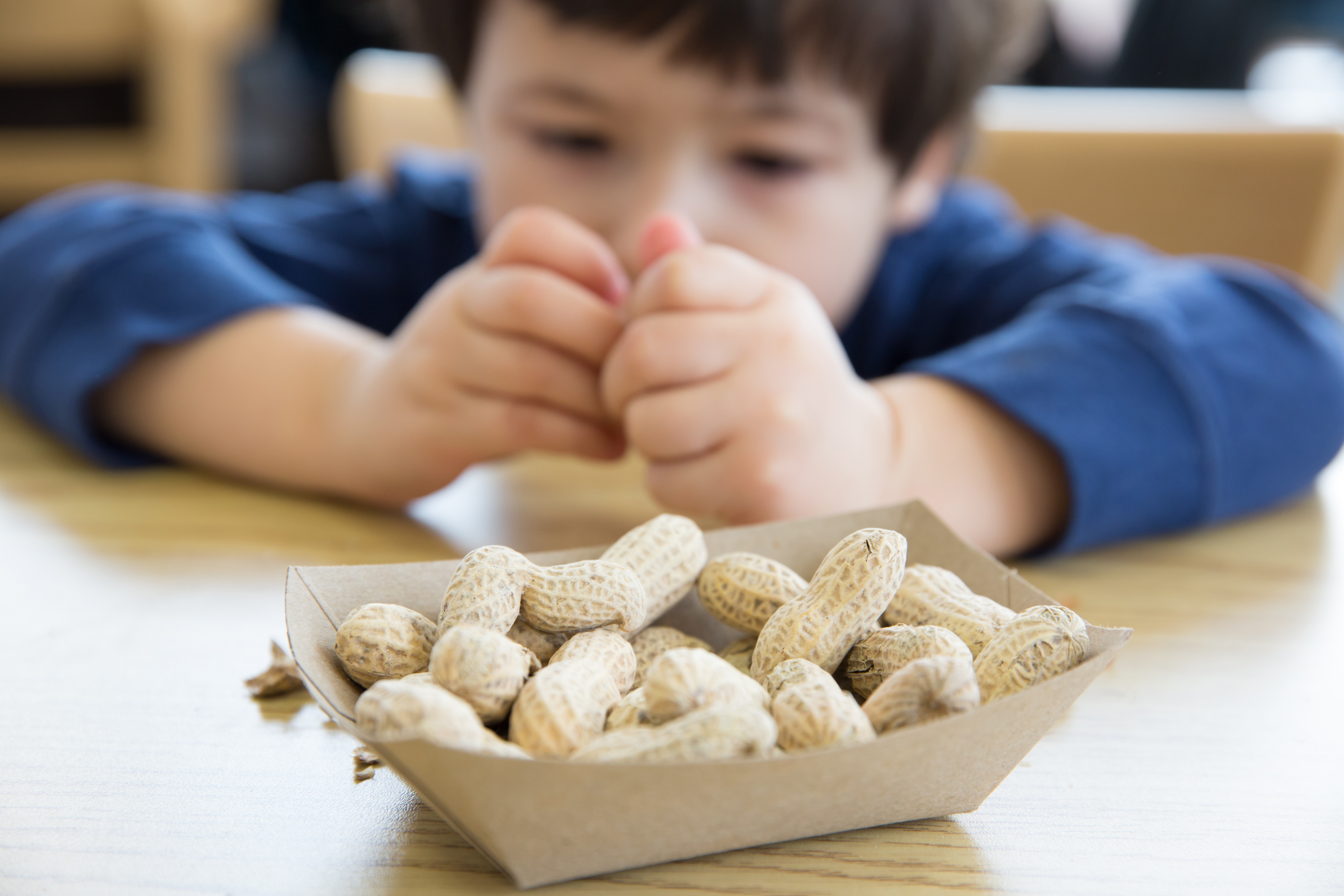How to know if your child has a food allergy

Call 911 for help now if your child has lost consciousness, is having trouble breathing, has blue lips, has pale, clammy skin, is dizzy, or has severe diarrhea or vomiting. These are signs and symptoms of anaphylactic shock.
An estimated 8 percent of children in the United States — or about 1 in 13 children — have a food allergy, according to the Centers for Disease Control and Prevention. Living with a food allergy can be scary and stressful for children and their families. Food allergies can cause serious allergic reactions that require emergency care. However, with attentive care, children with food allergies can live healthy, happy lives.
Getting the right treatment for a food allergy starts with knowing how to recognize the signs and symptoms of the condition. Below is more information about how to spot a food allergy, the most common food allergens (foods that cause allergic reactions) in children and how doctors treat food allergies in children.
Signs and symptoms of food allergy in children
The signs and symptoms of food allergy in children are caused by an abnormal immune system response. Normally, our immune systems guard us from germs that make us sick. In children with food allergies, the immune system mistakenly sees a food as harmful and produces an allergic reaction in response.
An allergic reaction to a food can result in a range of signs and symptoms. The symptoms may be mild or severe. The most common signs and symptoms of a food allergy are:
• Hives (welts on the skin)
• Itchy, red skin
• Itchy throat
• Stomachache (with or without diarrhea or vomiting)
• Swollen lips, tongue or throat
• Trouble breathing or wheezing
An allergic reaction to a food will typically occur within a few minutes to an hour of a child eating the food.
Even if your child seems to only have a mild reaction to a food, tell their healthcare provider about their symptoms. Seemingly mild food allergies can still eventually cause a severe, potentially life-threatening allergic reaction called anaphylaxis.
Anaphylaxis is the most severe food allergy reaction
Anaphylaxis is when the symptoms of food allergy are so severe, they can become life-threatening. Anaphylaxis can cause:
• Airway obstruction that prevents breathing
• Fainting
• Irregular pulse
• Low blood pressure
• Severe diarrhea or vomiting
The only treatment for anaphylaxis is fast administration of an epinephrine injection (commonly known by the brand name EpiPen). Epinephrine is available by prescription from a licensed allergy specialist.
The most common food allergens in children
Doctors and researchers have reported allergic reactions from over 150 different foods. But the majority of children with food allergies are allergic to one or more of the following foods:
• Eggs
• Fin fish
• Milk
• Peanuts
• Sesame
• Shellfish
• Soy
• Tree nuts
• Wheat
Eggs, milk and peanuts are the most common food allergens in children.
If your child shows signs or symptoms of food allergy after eating one or more of these foods, they could have a food allergy. Stop giving your child the food you think caused the reaction, and talk to their healthcare provider as soon as possible to protect them from a potentially severe allergic reaction.
How doctors treat food allergy in children
Pediatric allergy specialists are the doctors who typically treat food allergy in children. A pediatric allergy specialist can help you care for your child’s food allergy by:
• Performing tests that pinpoint the exact food or foods your child is allergic to
• Recommending ways to avoid the food or foods your child is allergic to
• Making suggestions for how your child can still get all the nutrients they need without the food allergen in their diet
• Prescribing epinephrine when necessary
• Determining if your child is a good candidate for oral immunotherapy (a therapy that can help the body build up resistance to a food allergen)
There are currently no cures for food allergies. The main goal of treatment is to find out which food or foods your child is allergic to, so they can avoid allergic reactions to them.
More points to know about food allergies in children
• A food allergy is different from a food intolerance. Although both can cause gastrointestinal symptoms, a food intolerance (such as lactose intolerance) doesn’t involve the immune system.
• Babies or toddlers who are allergic to milk or soy usually cry often and may have blood in their stool. Changing your child’s formula can help. Your child’s pediatrician can help you find the right formula for your child’s needs.
• Food allergens can be passed to a child through breast milk.
• Some children with severe food allergies don’t even need to eat a food to have a reaction — just touching the food can cause an allergic reaction.
• Your child will not have an allergic reaction to a food allergen the first time they’re exposed it. Their first allergic reaction will happen the second time they’re exposed to the food allergen.
Talk to your child’s pediatrician about any suspected food allergies
If you think your child might have a food allergy, make an appointment with their pediatrician today to discuss testing. They can refer you to a pediatric allergist — a doctor who is specially trained to care for children with food allergies. Prompt treatment for food allergy is important to avoid potentially severe allergic reactions.
Kentucky Children’s Hospital is home to an experienced team of pediatric allergy specialists. Learn more about the care they provide and how you can schedule an appointment.




